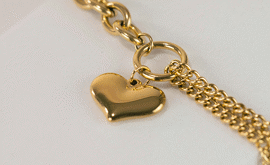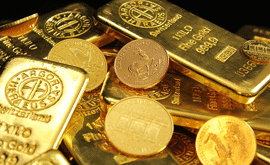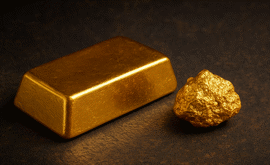Your Guide to the Rarest Coins in the UK
What makes a coin rare?
In order to be classed as a rare coin, it must meet a selection of the following criteria, including the overall condition of the piece, and whether the coin has a limited mintage or historical significance.
- Limited mintage
Coins with a low production quantity are considered to be rare, and their scarcity can often add to their value. Coins produced in limited mintages are usually intended for the collectors market, often commemorating special events or milestones. Low mintage coins can also be produced unintentionally due to minting errors, low demand, or historical circumstances such as the death or abdication of a monarch.
- Historical significance
Coins linked to significant events or historical figures, or those that were minted during pivotal historical periods can often be sought-after by collectors, and are often considered to be rare.
- Unique designs
Coins featuring special designs or extra features that differ from typical issues often attract high collector interest, contributing to their rarity.
- Age
Older coins may be considered rare, mainly due to a lower survival rate.
- Error coins
Coins with minting errors, or those that feature variations from the intended design are scarce, so can become rare collector’s items due to their uniqueness. Examples of this can include off-centre or double strikes, missing design elements, and mules (a coin struck using two dies never intended to be used together, resulting in an obverse and reverse design not usually seen on the same piece).
- Condition (Grade)
Coins in excellent, well-preserved condition, as well as highly graded coins by professional coin graders such as NGC or PCGS, are often more rare compared to those showing signs of wear and tear.
- Market demand
Shifting preferences and market trends can often influence the rarity and value of coins. A coin that is currently sought after can become rarer as collectors choose to retain them in their collections rather than parting ways with them.
- Cultural significance
Coins from specific cultures or historical periods can sometimes be rare due to their collectable appeal, limited mintage, or survival over time.
The rarest coins in the UK
1917 George V Gold Sovereign
The 1917 gold sovereign, struck at the London Mint, is considered to be one of the rarest sovereigns of the 20th century as it represents an important chapter in history.
1917 saw Britain heavily engaged in WWI. During this time, the British government moved large quantities of gold sovereigns in an effort to settle the debt owed to the United States, resulting in huge numbers of sovereigns being melted down. Any 1917 sovereign surviving today has survived both a world war and the melting pot, making it very scarce and highly valuable. The coin features Benedetto Pistrucci’s famous St George and the Dragon design on the reverse, and the portrait of King George V on the obverse.
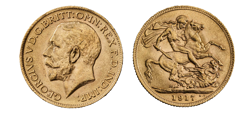
1937 Edward VIII Gold Sovereign
Coinage minted during the reign of King Edward VIII has historical significance due to the king abdicating only a few months into his reign. As a result, there were no official gold sovereign coins bearing King Edward VIII’s portrait struck for circulation, but a very small amount of pattern pieces were produced and are now extremely hard to find, making them exceedingly rare and valuable.
One of the rarest coins in the world, the 1937 Edward VIII Sovereign features Pistrucci’s St George and the Dragon design on the reverse, and Humphrey Paget’s portrait of the king on the obverse. Since the 17th century, each new monarch’s coinage portrait traditionally faced the opposite direction to that of the previous king or queen. As George V’s portrait faced left, Edward VIII’s portrait should have faced to the right. However, Edward VIII went against tradition and chose to face to the left, as he favoured his left side and thought the portrait would look more flattering this way.
1703 Queen Anne Vigo Five-Guineas
The Vigo 5-Guinea coins were struck from gold bullion captured by the British fleet at the Battle of Vigo Bay in Spain in 1702, during the War of the Spanish Succession. Although victorious in this naval battle, England was later disappointed to discover that many of the enemy ships were nearly empty of precious cargo, with only a handful of gold coins (and over 4,000 pounds of silver) recovered. The decision was taken by the Master of The Royal Mint at the time, Isaac Newton, to have the gold recovered from this battle struck into celebratory coins. Queen Anne also issued a royal warrant upon their creation where she stated that the Vigo coins would “continue to posterity the remembrance of that glorious action” at Vigo Bay.
The obverse of the 1703 Vigo 5 Guinea coin bears the bust of Queen Anne, and the reverse features a crowned shield and sceptre design.
An opportunity for propaganda in an attempt to reassure the public that the war was going well, it is estimated that only around 20 of these coins were minted, making them extremely sought-after and placing them among the rarest of UK coins.
1933 George V Penny
The 1933 penny is a famous coin in the UK, with only seven being struck and never released into circulation. Due to a large stock of pennies in 1933, no more were required to be struck. However, it was tradition at the time that new buildings would have complete sets of the current year’s coins buried under the foundation, and so three 1933 pennies were struck especially for this purpose. Another small number of these coins were also minted to be kept by The Royal Mint and the British Museum.
Featuring the seated image of Britannia on the reverse and King George V on the obverse, these coins are among the rarest in the world, highly prized by collectors and commanding a huge price when sold.
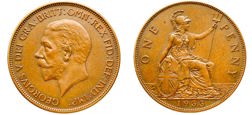
1839 Una and the Lion Gold £5 Coin
The Una and the Lion coin is considered to be one of the most beautiful coins ever made. The obverse of the coin bears the young head portrait of Queen Victoria, designed by William Wyon. The reverse of the coin, also designed by Wyan, draws inspiration from characters from Edmund Spenser’s epic poem ‘The Faerie Queene’. In the poem, Una is the personification of the church, and uses her beauty and honest nature to tame a lion which then travels with her as a guardian. The coin shows Una as a crowned Queen Victoria, guiding the lion with her sceptre.
Favoured by collectors due to its beauty and rarity, the 1839 Una and the Lion £5 gold coin was limited to only between 300 to 500 minted, with some variations including an inscribed edge on some coins adding to the desirability of this special coin. The Royal Mint later reissued a Una and the Lion coin as part of their Great Engravers series in 2019.
1819 George III Gold Sovereign
The 1819 sovereign is considered a rare British coin due to its limited mintage of only 3,574 coins, all from gold which was supplied by private institutions due to specie (coin money) payments being suspended by the Bank of England at that time.
The obverse of the 1819 Gold Sovereign bears the laureate head portrait of George III, and the reverse features the iconic St George and the Dragon design. Both sides were designed by Benedetto Pistrucci.
It is rumoured that most of these coins were sent abroad due to the public using banknotes for payment, rather than gold. In 1929, a survey was conducted to check how circulating gold sovereigns were faring. Out of the 105,000 pieces examined, only two 1819 coins were seen – only ten years after they were minted. It is believed that only around ten of these coins exist today, making it a coin highly desired by collectors.
Value of the rarest coins in the UK
Coin | Mintage | Approximate Value |
1917 George V Gold Sovereign | 1,014,714 (few remain) | £30,000 |
1937 Edward VIII Gold Sovereign | 6 | £1,000,000 |
1703 Queen Anne Vigo Five-Guineas | 20 | £845,000 |
1933 George V Penny | 7 | £86,400 |
1839 Una and the Lion Gold £5 Coin | 300-500 | £889,000 |
1819 George III Gold Sovereign | 3,574 (Around 10 in existence) | £200,000 |
Why Join Our Mailing List?
By signing up, you'll gain access to exclusive updates, early announcements, and tailored insights into the world of bullion and precious metals.

Latest Updates On Bullion

New Releases

Special Offers

Market Analysis
This blog represents one person’s opinion only. Please note, gold and silver prices may go down as well as up. Atkinsons Bullion & Coins accepts no responsibility for any losses based on information we have provided. We do not offer investment advice. Please carry out your own research before making an investment decision.


